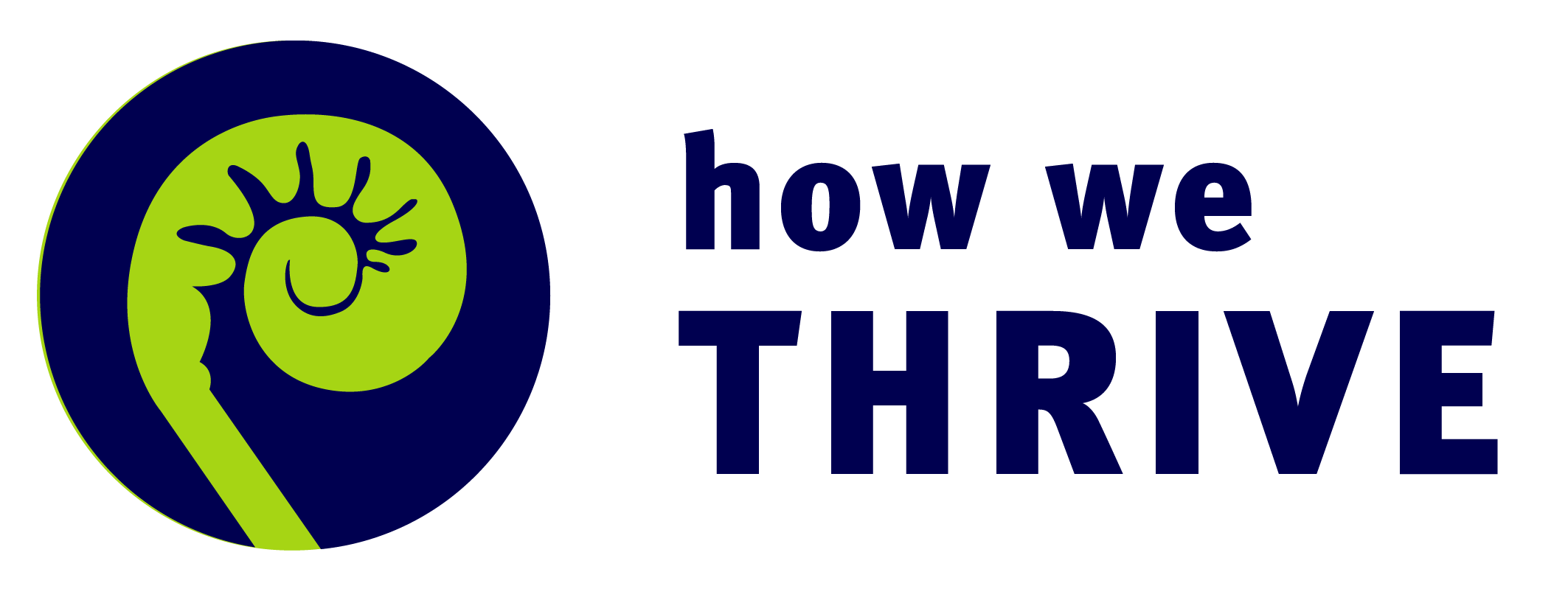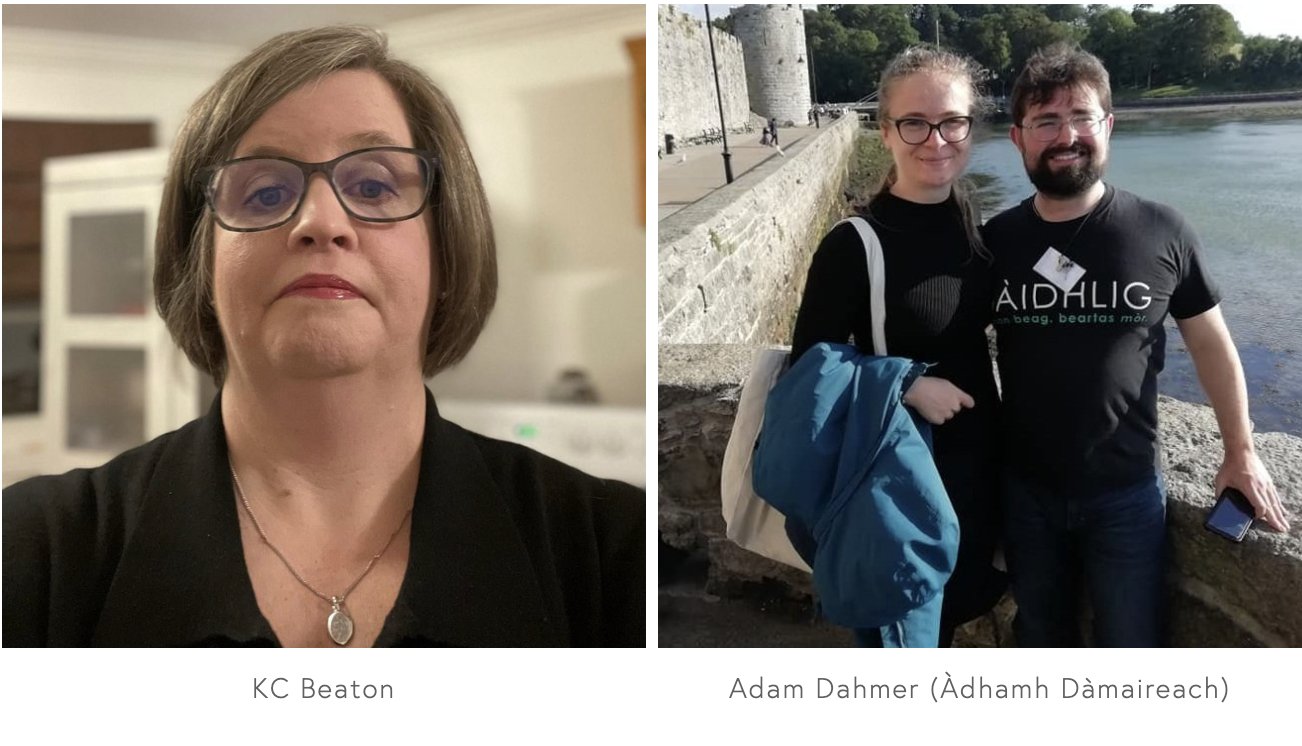Why community matters
February 17, 2023
Host: Margie Beaton
Guests: KC Beaton, Adam Dahmer
In this visit, we explored the topic of community—the beauty it holds for us and ways we can contribute to its vitality. What is at the heart of a Gaelic community? Is it the language or is it the culture, heritage, and traditions shared over generations? Or both? How do we recover the beautiful elements of Gaelic language and culture that have been eroded or lost, especially when Gaels and their descendants have been scattered around the globe?
Our guests brought two very different perspectives to these questions. KC Beaton, Gaelic speaker and singer, has spent the better part of her life in the village of Mabou, Cape Breton, actively choosing to live and raise her daughter in this community. She often writes beautifully of her love of place. Adam Dahmer (Àdhamh Dàmaireach), Gaelic speaker, instructor, and cultural enthusiast originally from Louisville, Kentucky, holds a PhD in Celtic Studies from University of Edinburgh. He and his wife Dhanya are the founders and directors of SPLANG!, an organization dedicated to organizing Gaelic events in Kentucky and elsewhere in the southern United States.
What we heard
When thinking of community, Adam brought us to a moment in Flodigarry, Scotland, where as a student at Edinburgh University, he along with other students were singing songs with Gaelic speakers from the area.
“All of us together in the hall of this hostel with people from all over the world. You had people from France and Germany, North America, South America, and parts of Asia, and of course Scotland. . .And I remember we joined in the chorus of Mòrag of Dun Bheagan. (he sings the chorus). . . For some of us, that’s all we could manage of the song, but by God we had that part, and we were belting it! And I thought to myself, well this is just wonderful. And what a great feeling that everyone is connected in this way, and on the same page, on what seemed like a superficial level, but what felt like a very deep one."
Later he felt that same feeling, to his surprise, in his home state of Kentucky, when he led others on that same song in a pub. “Here it was, and it was me that had done it,” he said. “That was a very satisfying moment.. .I want everybody to have a moment like that, where they found something they enjoyed and are able to recreate it for other people.”
This is one way to build community, said Adam. While he appreciates social media as a means to connect Gaelic speakers who don’t have much opportunity to use the language, its real power is in augmenting or supporting existing physical communities.
These days many people are recoiling from modernity and are overwhelmed by the fast-paced technological world. “There is an ethnic renaissance taking place. People are asking who are their people. What is their culture? This has wonderful aspects to it in that a lot of Indigenous people are feeling empowered, a lot of ethnic and racial minorities are feeling empowered. But the people who don’t have a ready answer for that, a lot of them are going in weird directions. You’ve got the right wing that is resurgent, arguably more than at any time since before the Second World War. . . And what I think a large part of that is, is that white people looking at themselves and saying, what is my culture, who am I, who are my people?
“Because whiteness in and of itself is not a very fulfilling identity. It was only created as of the late 1600s . . . to elevate some people over other people. It was very much divorced from what we would call indigeneity. It shuns having an authentic relationship with the place you are from. It tries to mediate most relationships through power hierarchies and a capitalist economy. And I think a lot of people who find themselves saddled with that identity are really at a loss now. . . And I think with Gàidhlig we can give a lot of them something that is very real. And I am not saying Gàidhlig is only for white people, that would be a terrifying way to interpret this. Don’t take it that way. I believe that everyone who wants to be involved should be involved with Gàidhlig . . . I think people who are in Scottish and clan societies are looking for an authentic connection to culture. And I think Gàidhlig can provide that.“
KC Beaton began by reading prose she wrote after attending a neighbour’s funeral in her hometown of Mabou. In it she connects a community to the weaving of a blanket. She said that the warp lays out the foundational threads, with the weft or woof threads weaving over and under to form the pattern.
“It’s an act of development by intricacy, each piece plays a role in the pattern that will form the finished product,” she reads."Weaker strands aren’t always discarded, but they may require a supportive knot.”
In older Gaelic societies, blankets were taken off the loom and then subjected to a process of shrinking through a luathadh, or milling of the cloth.
“It is a brutal transaction to ensure a bit of warmth," she reads. "In life, there are so many difficult occasions that leave us feeling pounded by fate. There are times when communities grow thicker as the connections between us deepen, binding us all in supportive warmth, walking together through it all."
KC reads that a community can grow anywhere: “The most important requirements are that we keep open hearts and minds, celebrate how we are alike, and honor and respect the ways that we are different.”
As a metaphor, the warp or foundation of the cloth is the Gaelic language, and the woof is the different traditions: songs, stories, dancing, genealogy and all those colorful elements that have piqued people's interest.
When thinking of special moments of community she is reminded of a Celtic Colours concert that connected singers from Scotland and from this side of the ocean. There were 500 people in the auditorium who sang together the chorus for O Teannaibh Dluth is Togaibh Fonn. "I had goosebumps and tears," she remembers.
At another concert last year, which honored Maureen MacKenzie who brought Mabou teenagers together in a choral group in the 1980s, she was moved to sing with six from the group the songs Maureen taught them.
"When I was a teenager, Gaelic was not popular. It wasn't that it wasn't cool, it just wasn't there."
She is happy to see the progress that has been made in raising awareness of the importance of Gaelic language, culture and community.
"I was able to raise my daughter in a community where the language and traditions were all kind of cool. West Mabou Square Dance on a Saturday night was where the cool kids hung out. I see more confident kids as a result of that. So I think that having that community and having the ability to bring your children into that, that's why it's important for me."
What we said
Some of our comments were shared in the chat stream during the conversation with the guests. Then, in the breakout rooms, we all responded to the stories we’d heard, and shared our own reflections. When we returned to the main room, we wrote some highlights and themes in the chat stream. Read all our comments.


